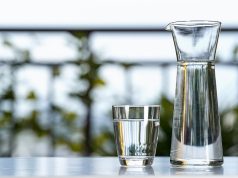Move is attempt to prevent fluorosis caused by overexposure to the mineral
TUESDAY, April 28, 2015 (HealthDay News) — The U.S. government has decreased its recommended level of fluoride in drinking water for the first time in a half-century.
The optimal fluoride level in drinking water to prevent tooth decay should be 0.7 mg of fluoride per liter of water, the U.S. Department of Health and Human Services (HHS) announced Monday. The new level falls at the bottom end of the previously recommended fluoridation range of 0.7 to 1.2 mg per liter, which was issued in 1962.
Health experts recommended the change because Americans now have access to more sources of fluoride, including toothpaste and mouth rinses, than they did when municipal officials first began adding the mineral to water supplies across the United States, according to the HHS. As a result, more people are exposed to too much fluoride and are developing fluorosis.
Federal health officials say the new recommended level will maintain the protective benefits of water fluoridation and reduce the occurrence of dental fluorosis. “While additional sources of fluoride are more widely used than they were in 1962, the need for community water fluoridation still continues,” U.S. Deputy Surgeon General Rear Admiral Boris Lushniak, M.D., M.P.H., said in a news release issued by the HHS. “Community water fluoridation continues to reduce tooth decay in children and adults beyond that provided by using only toothpaste and other fluoride-containing products.”
Copyright © 2015 HealthDay. All rights reserved.








